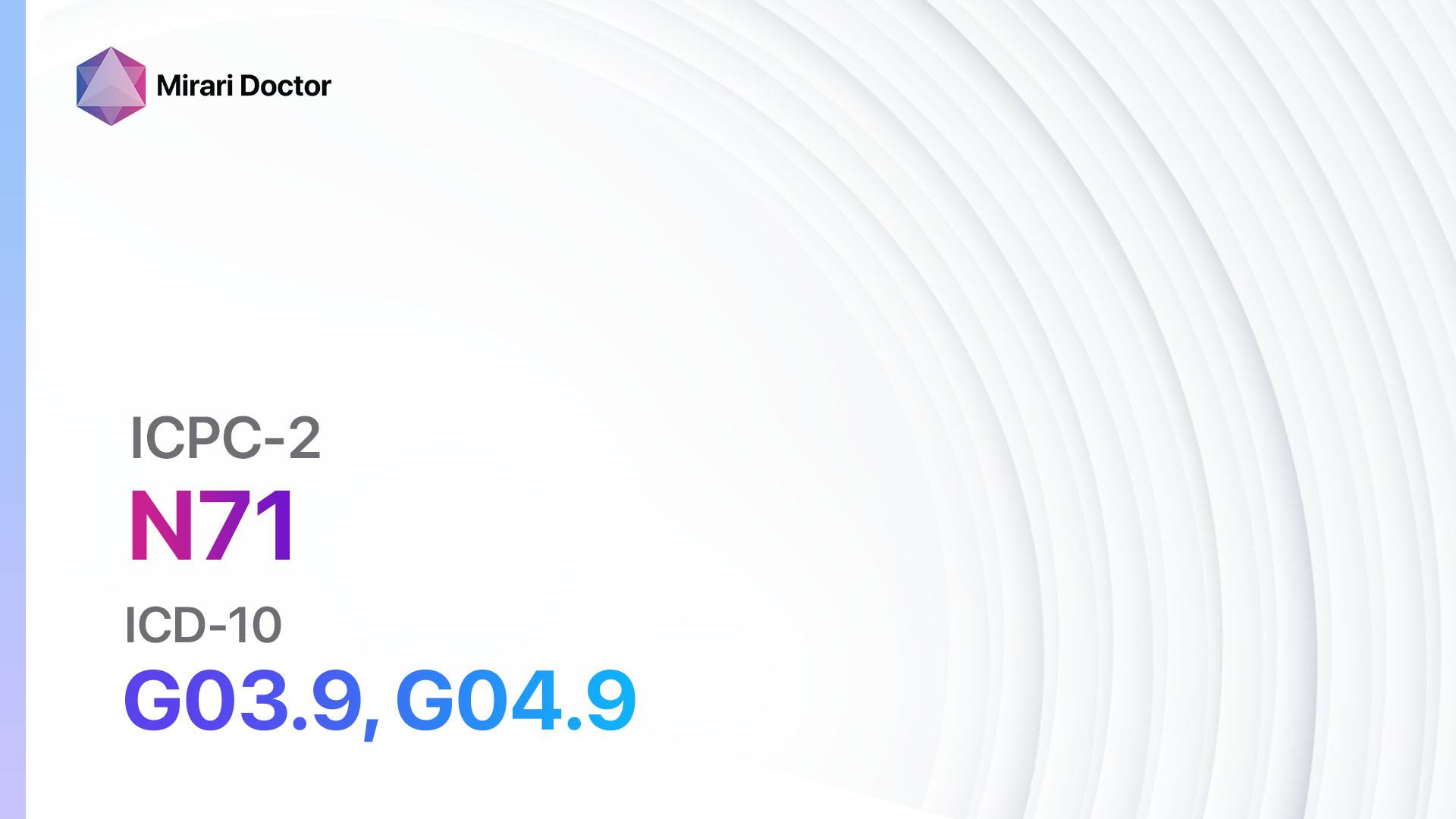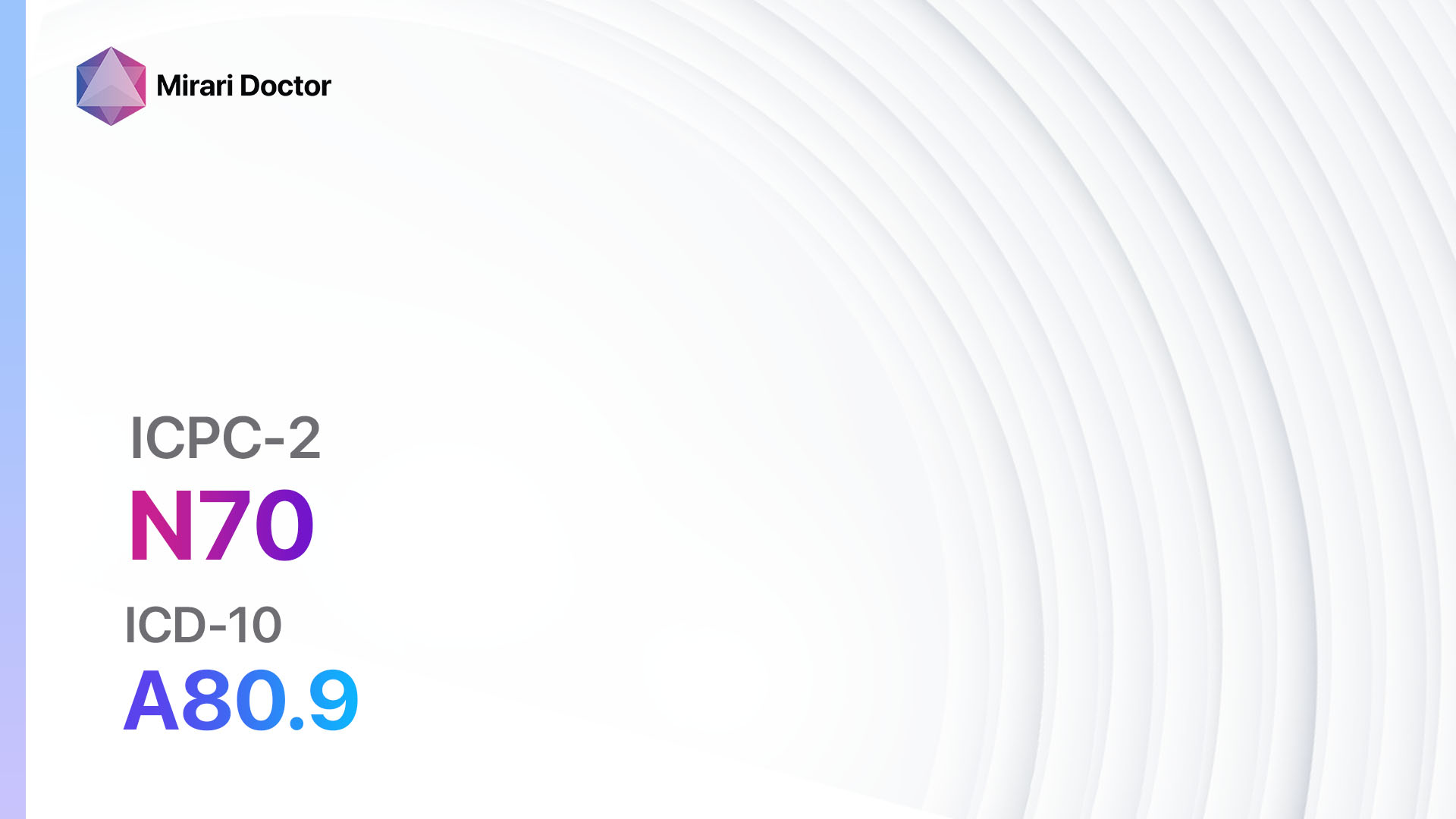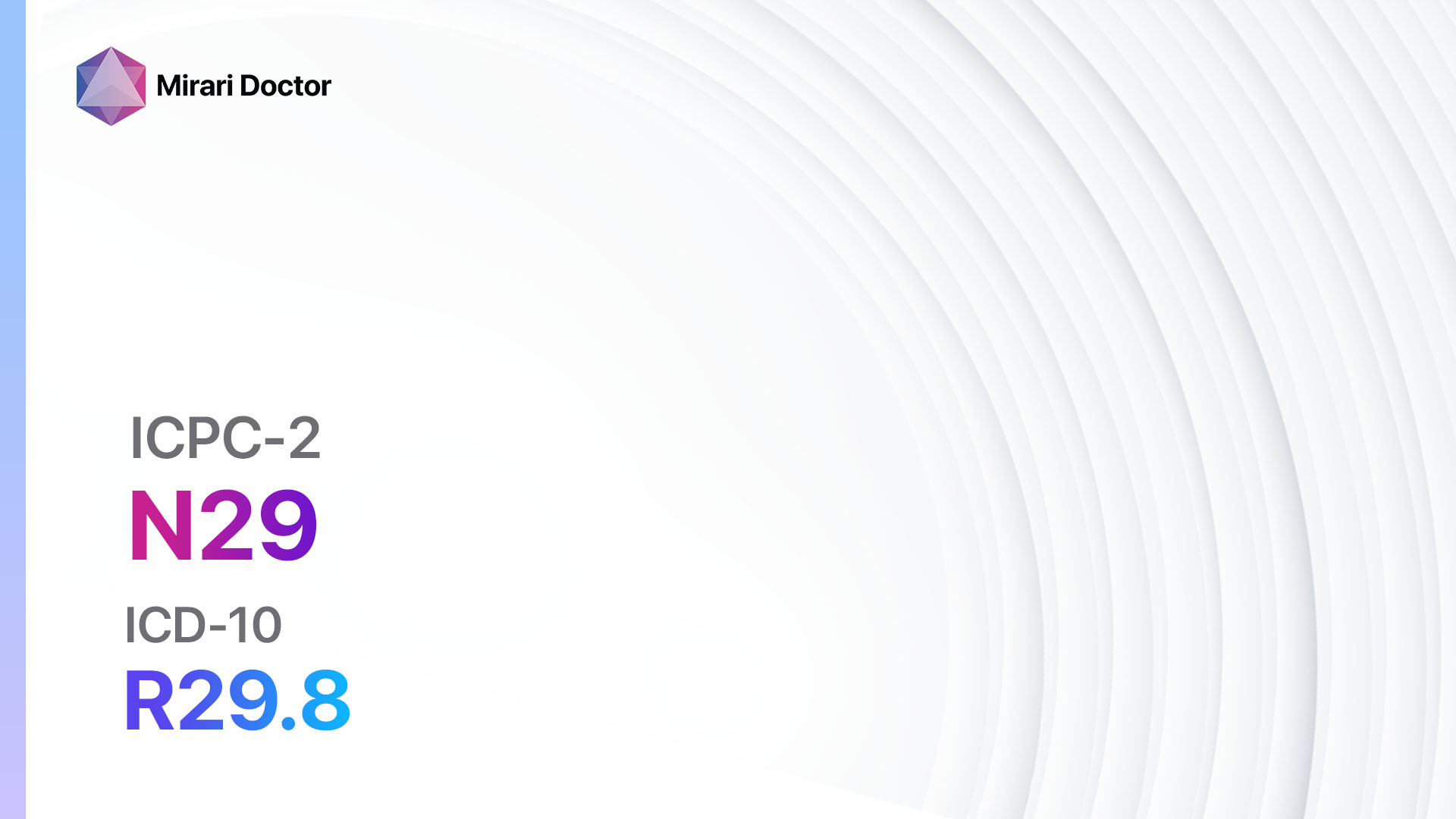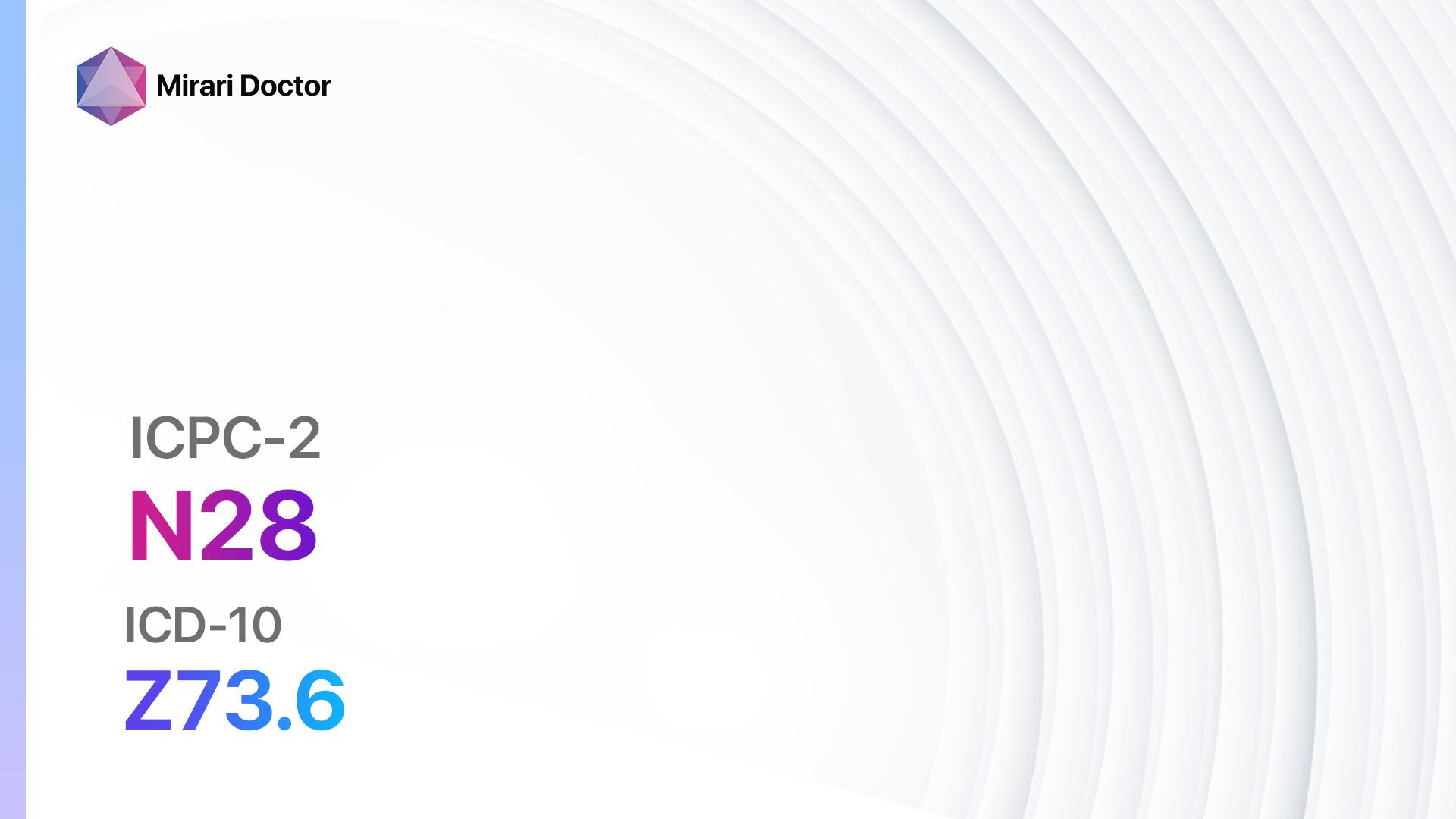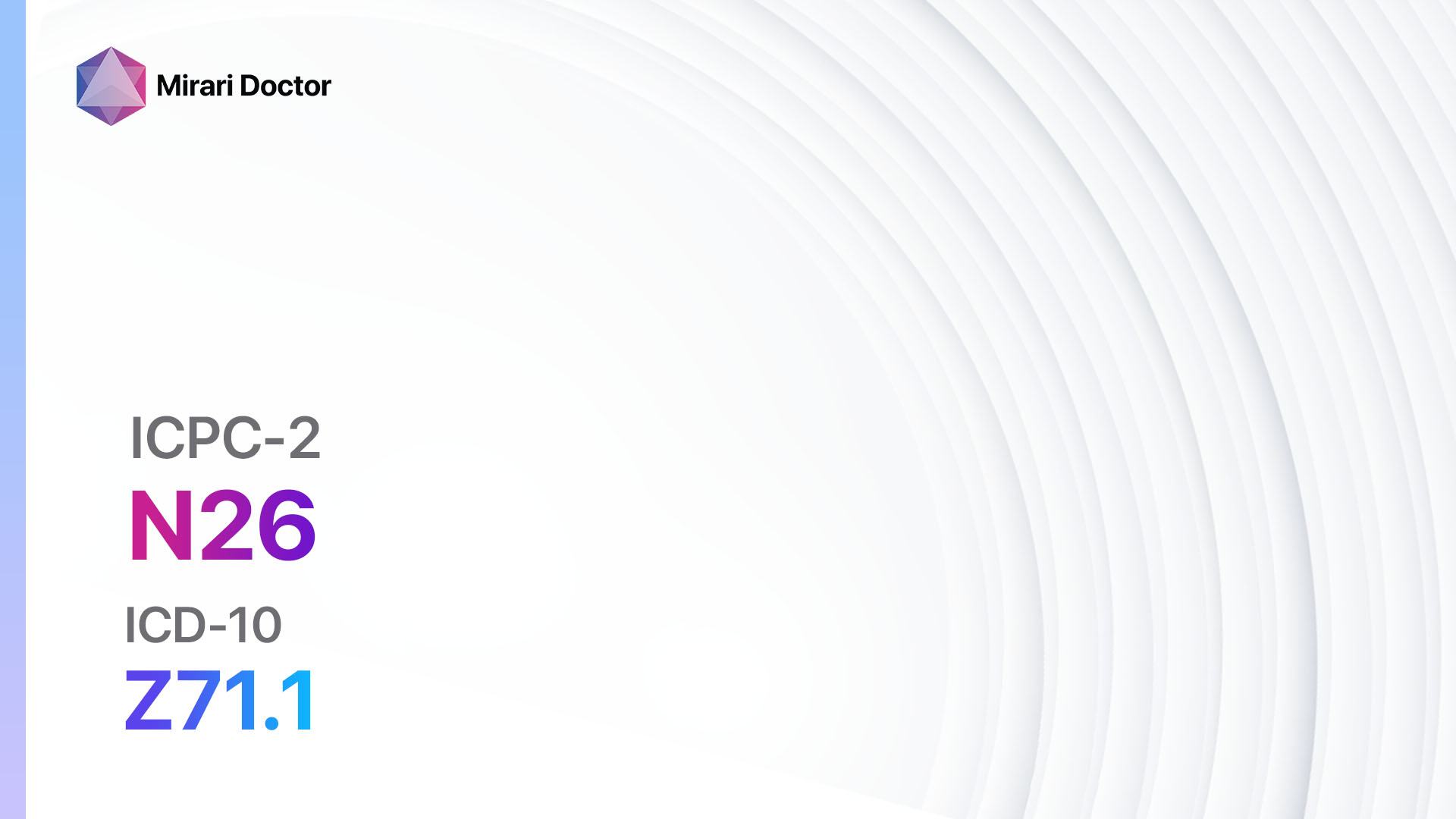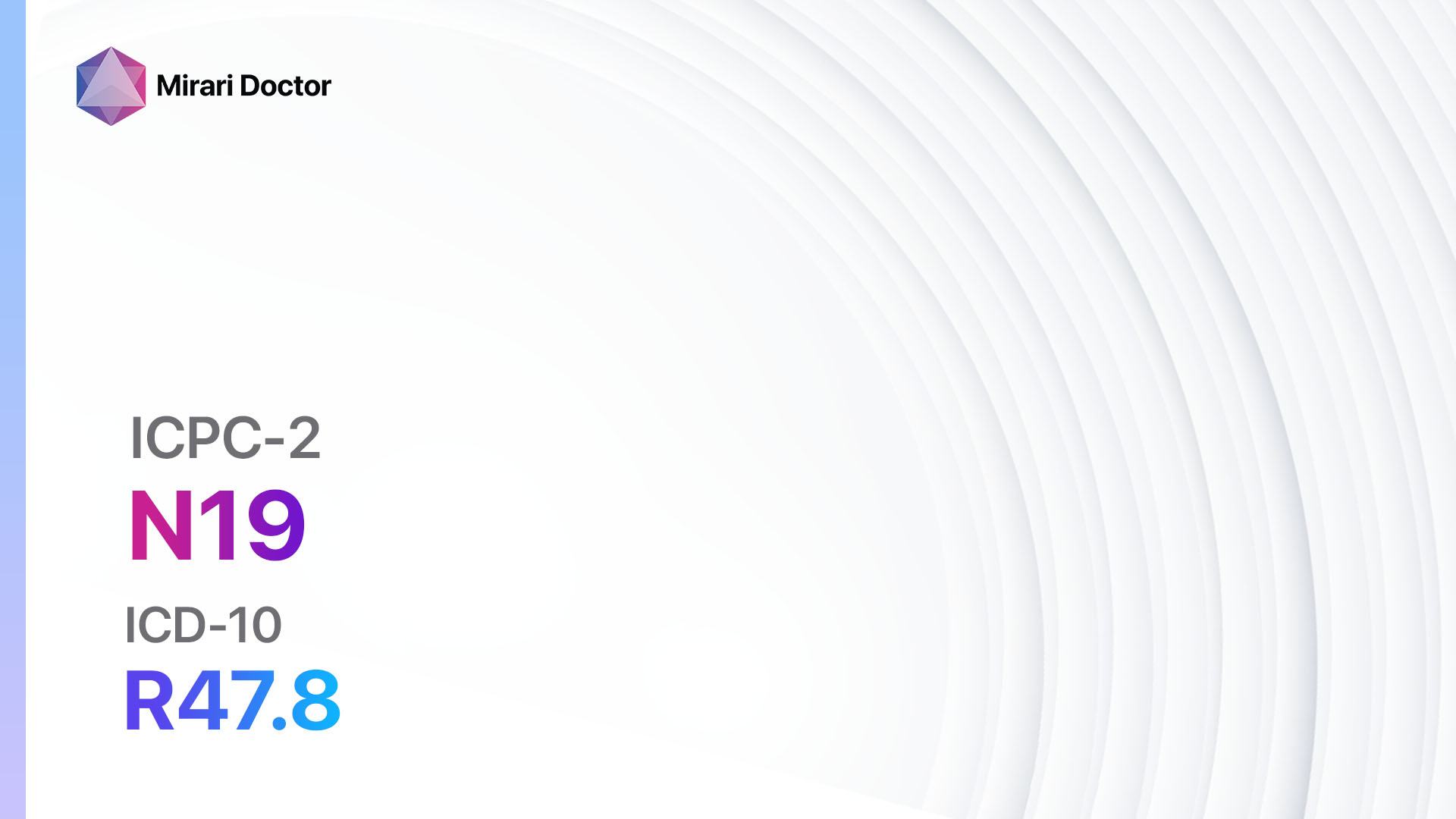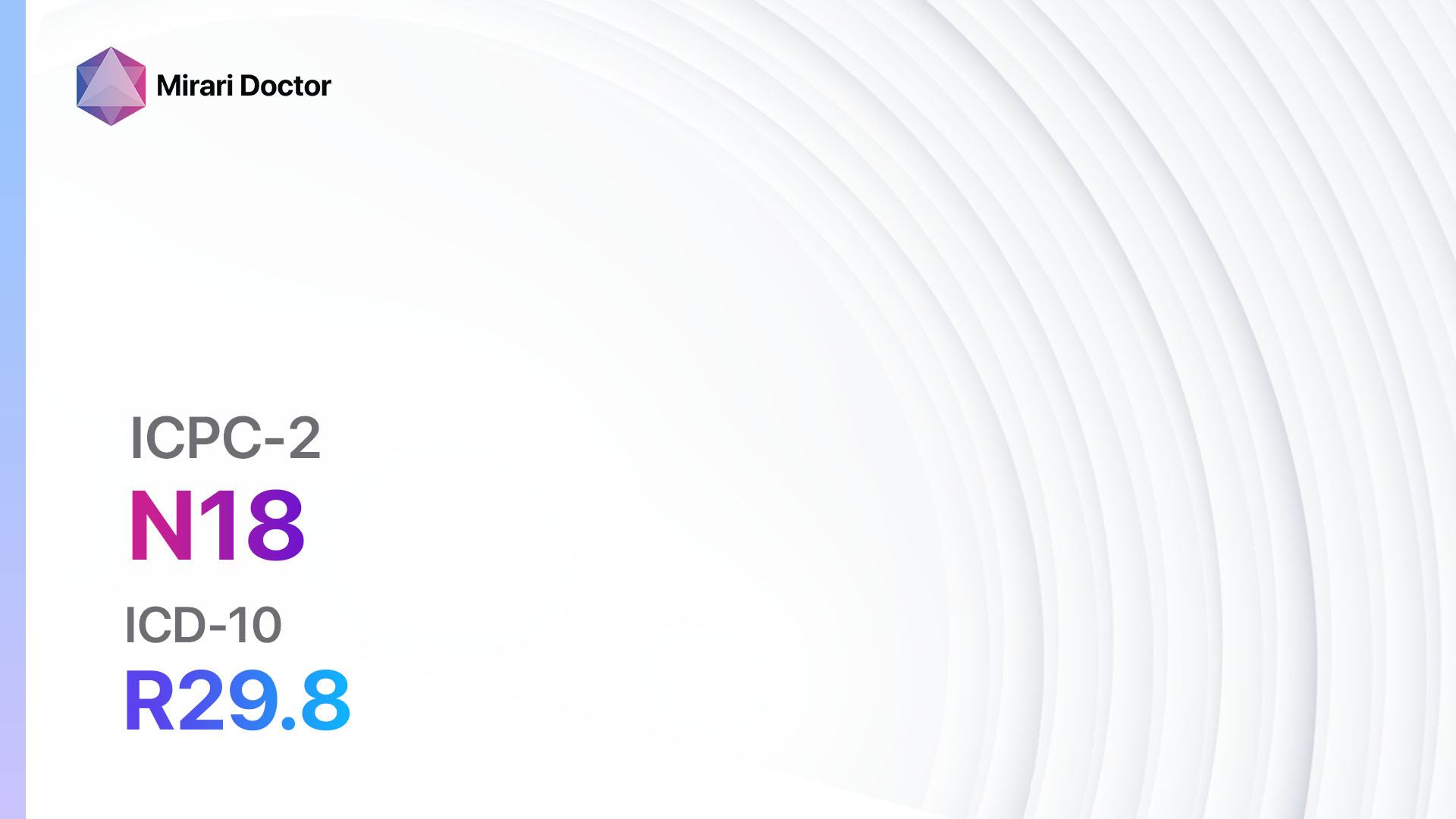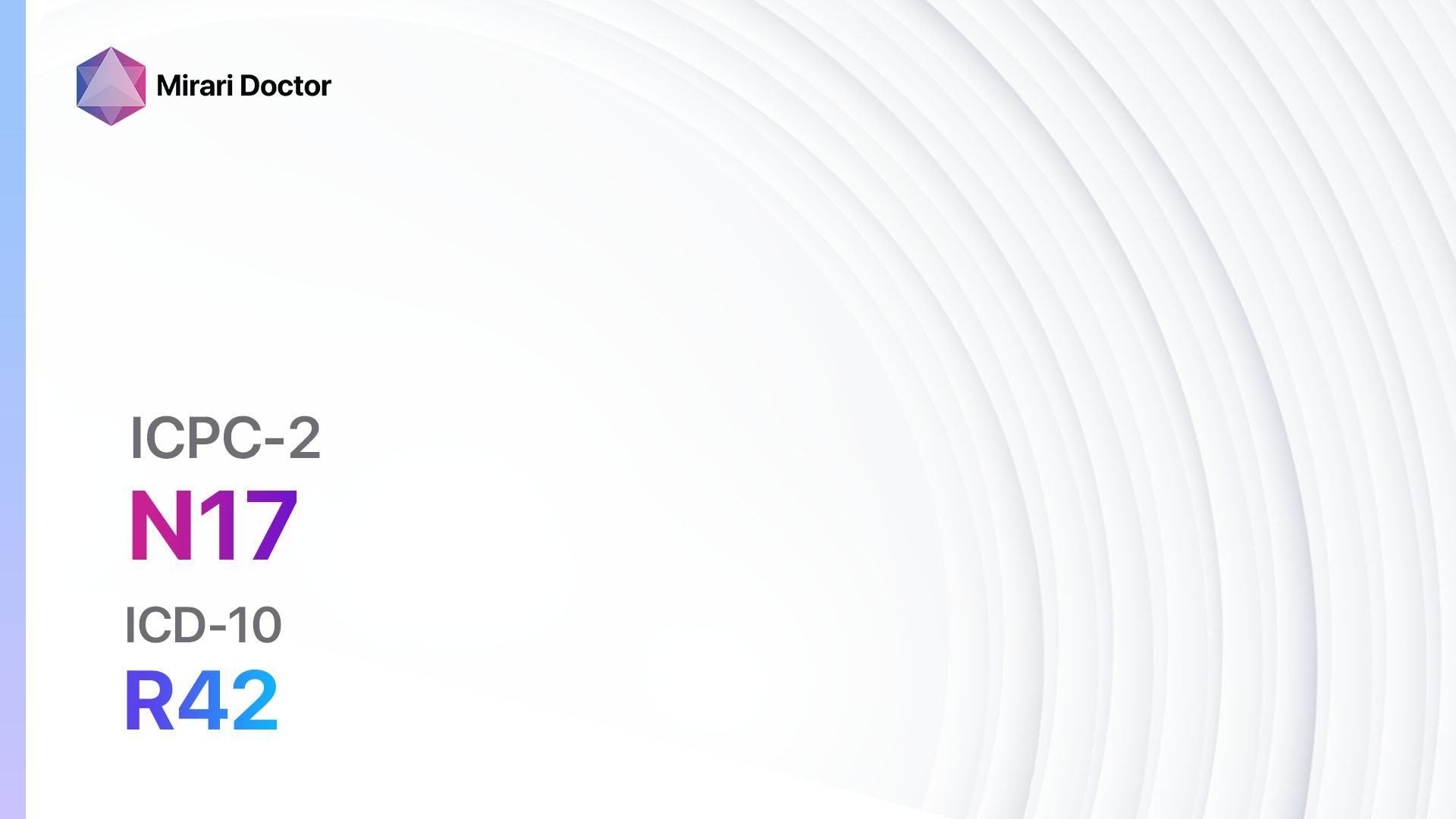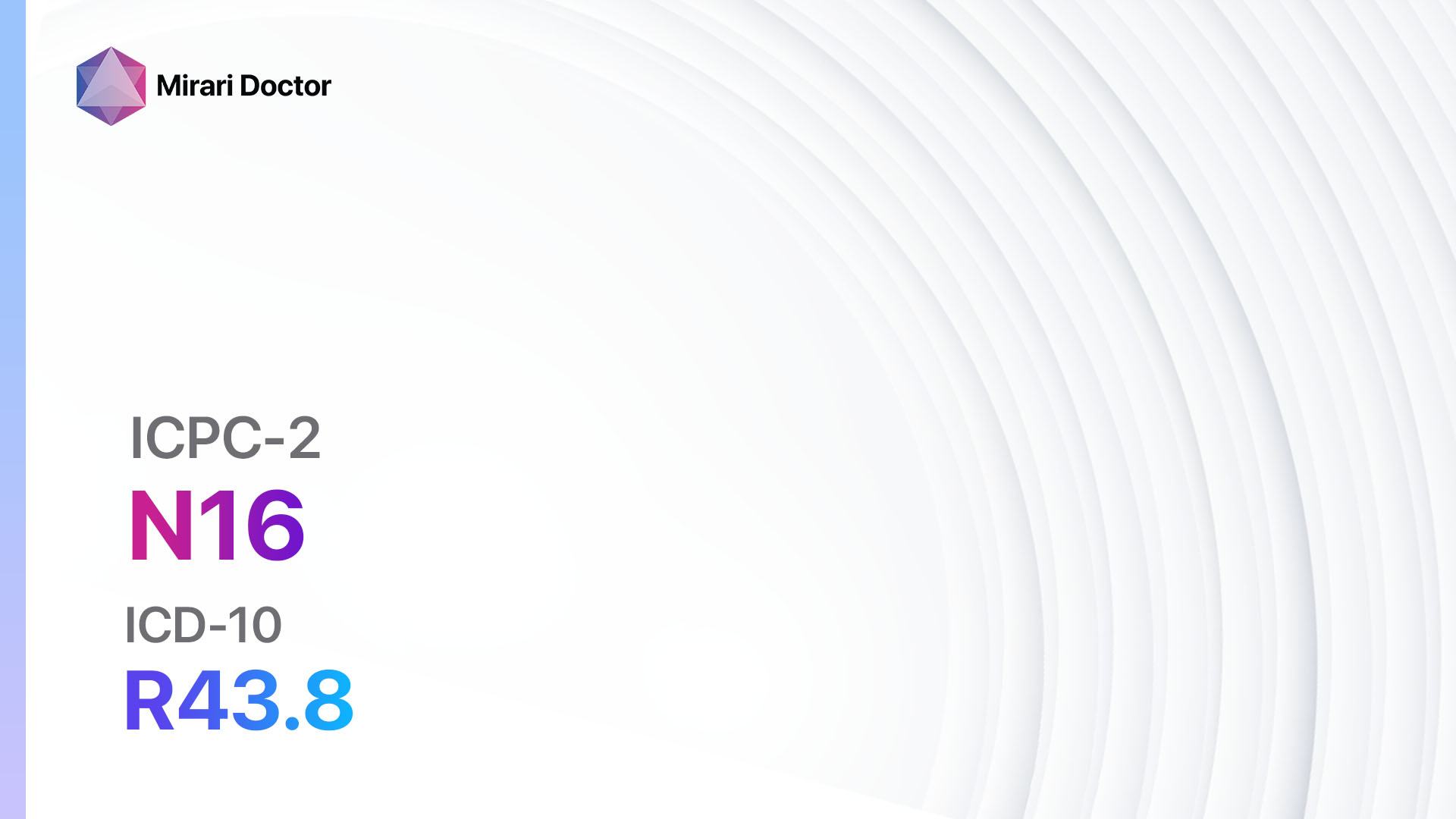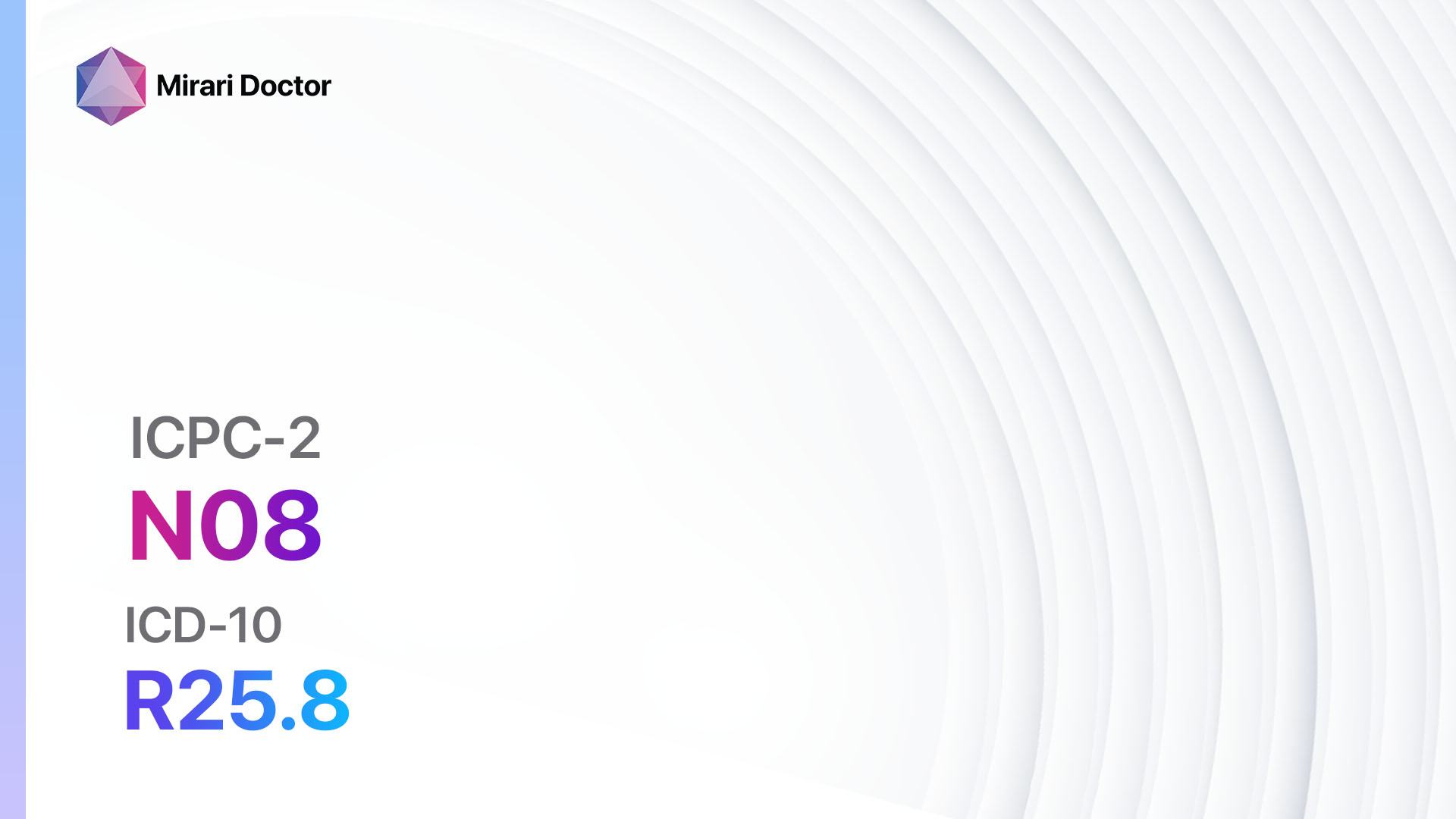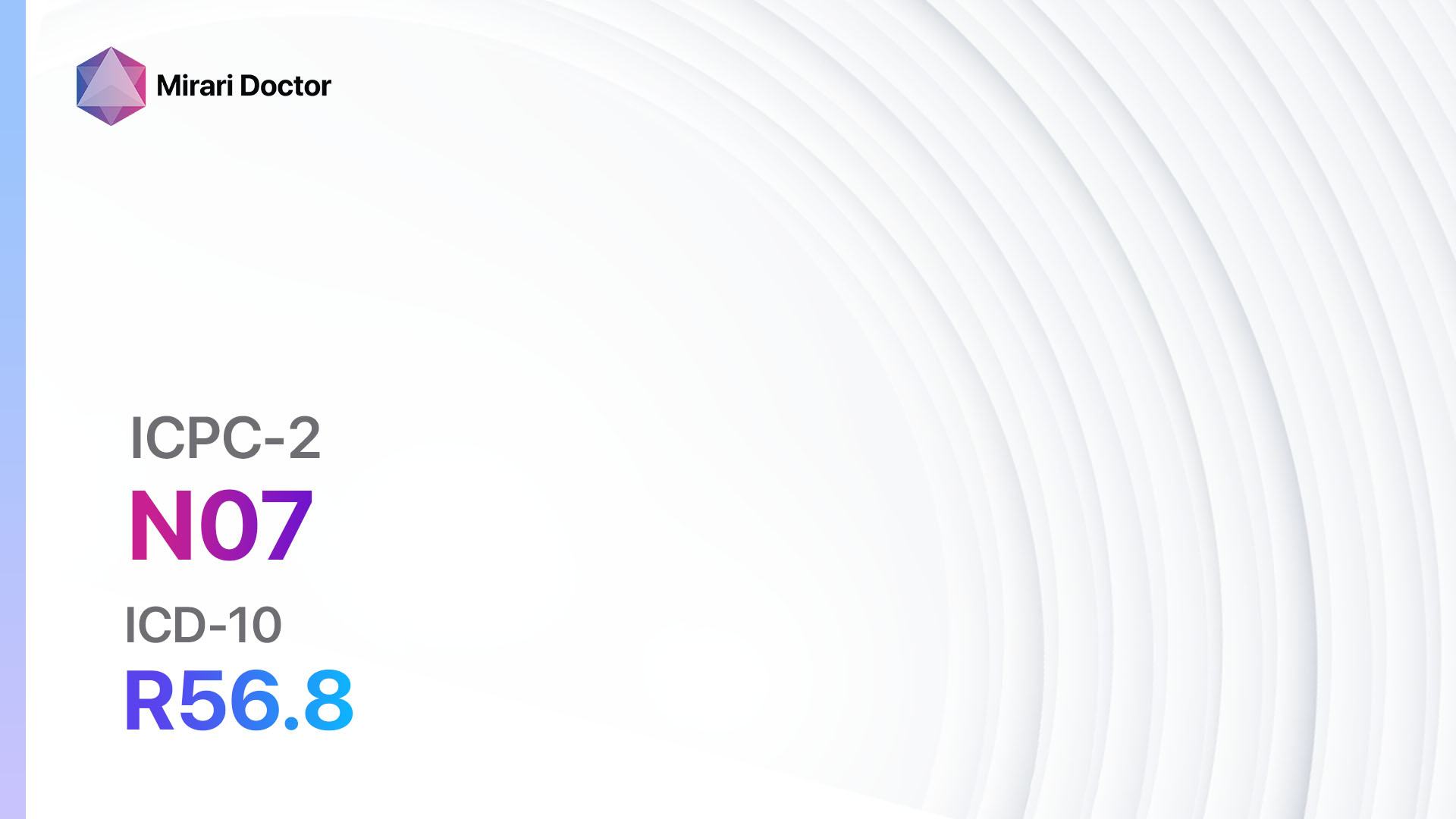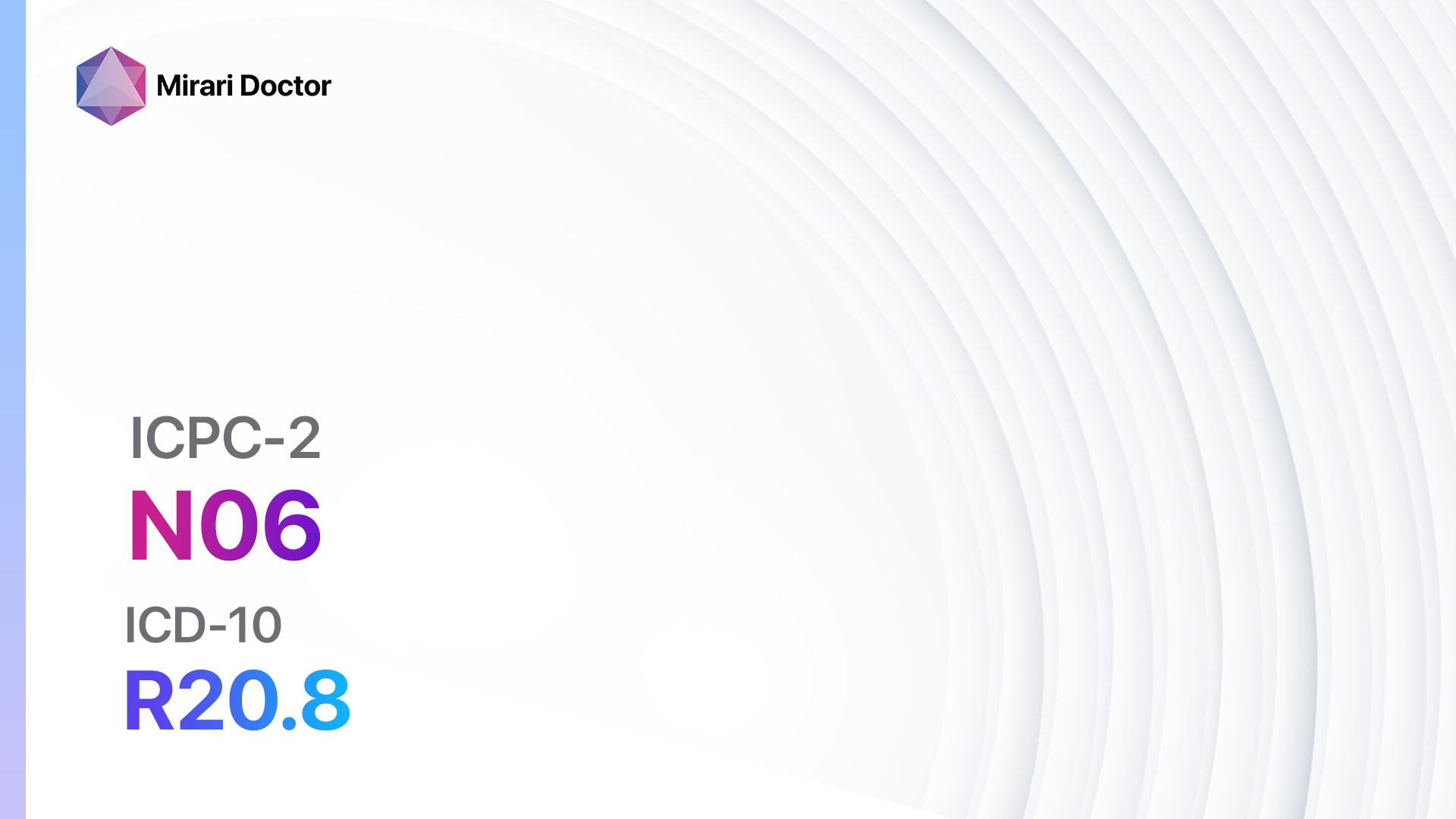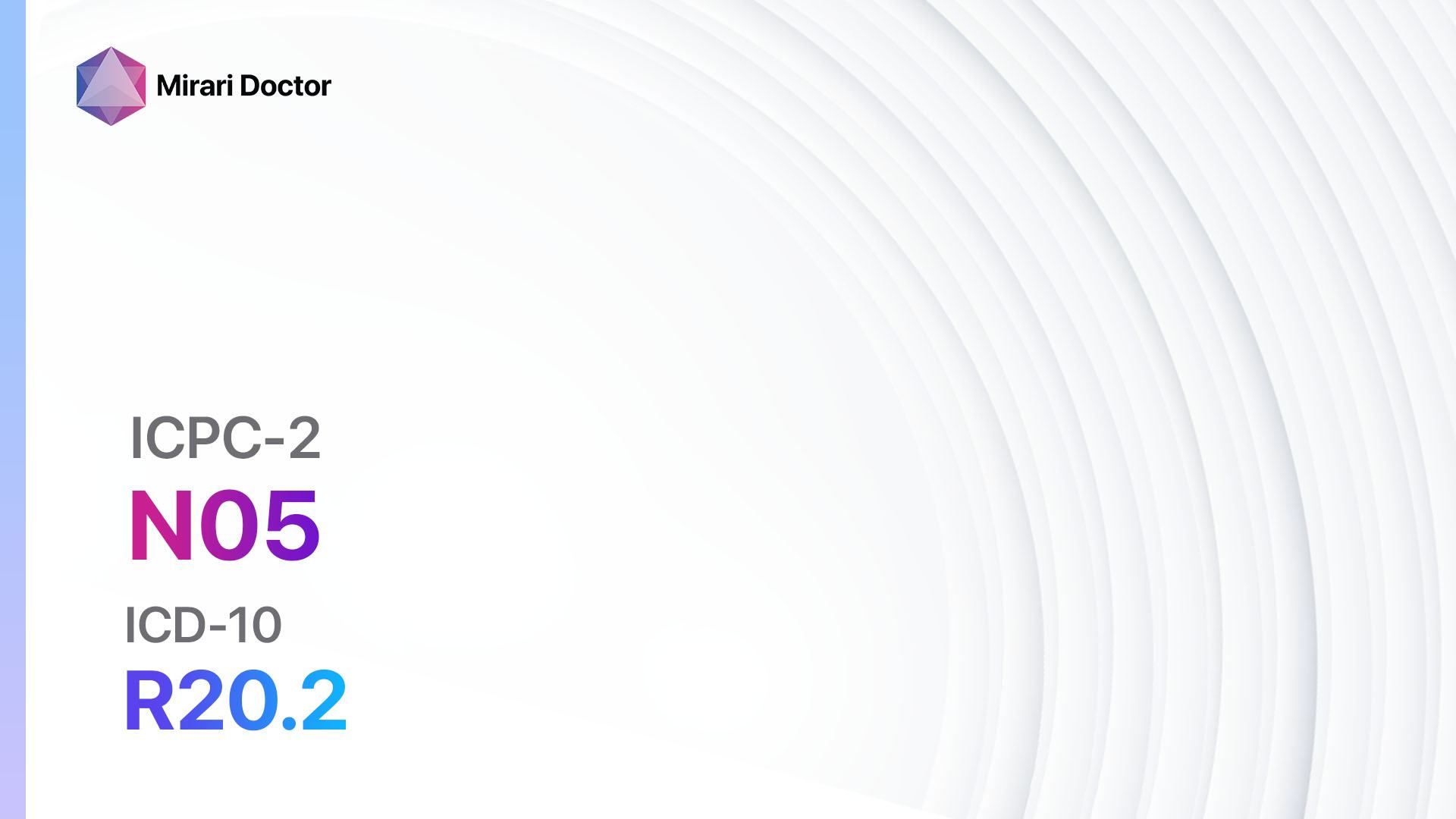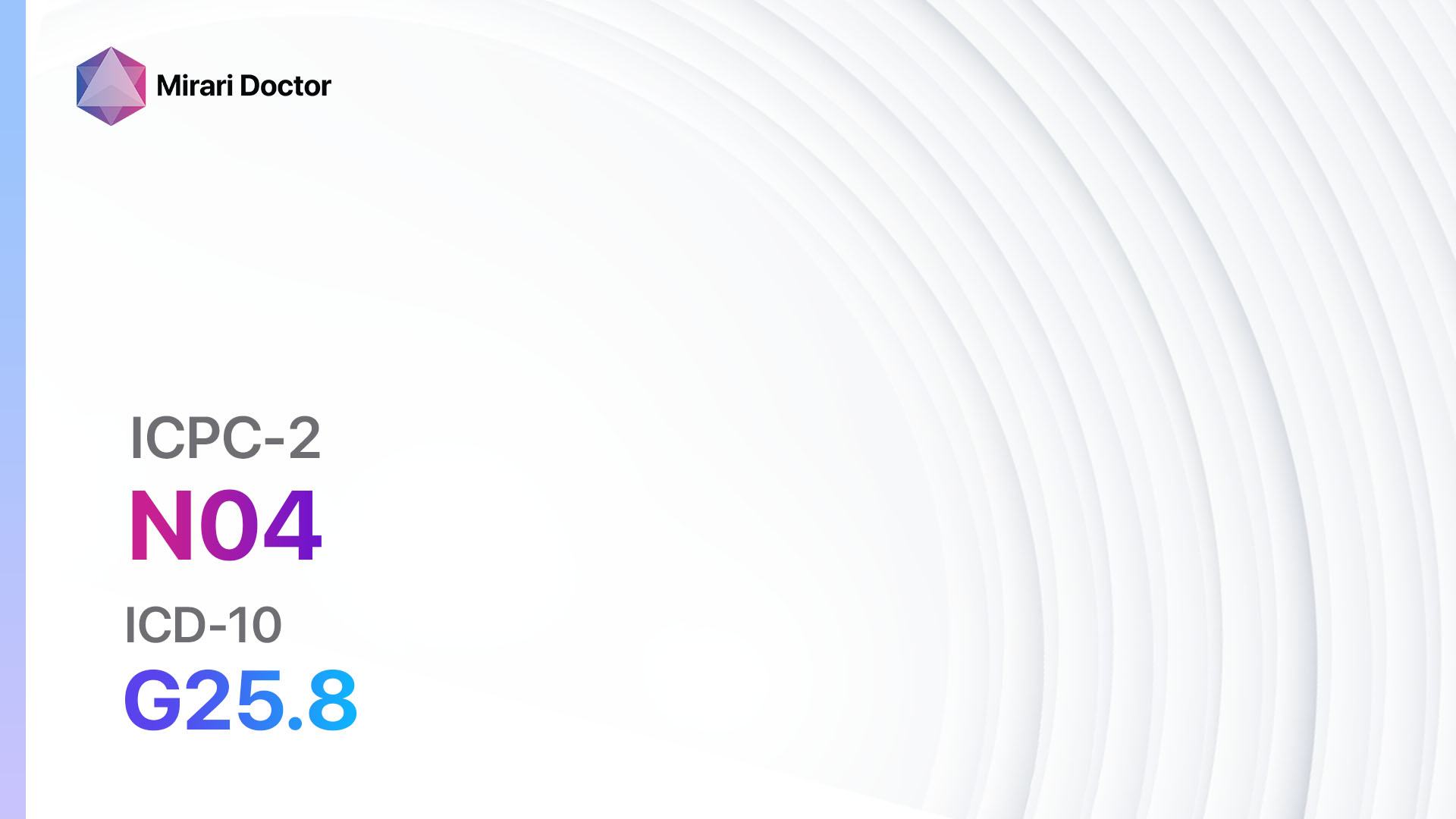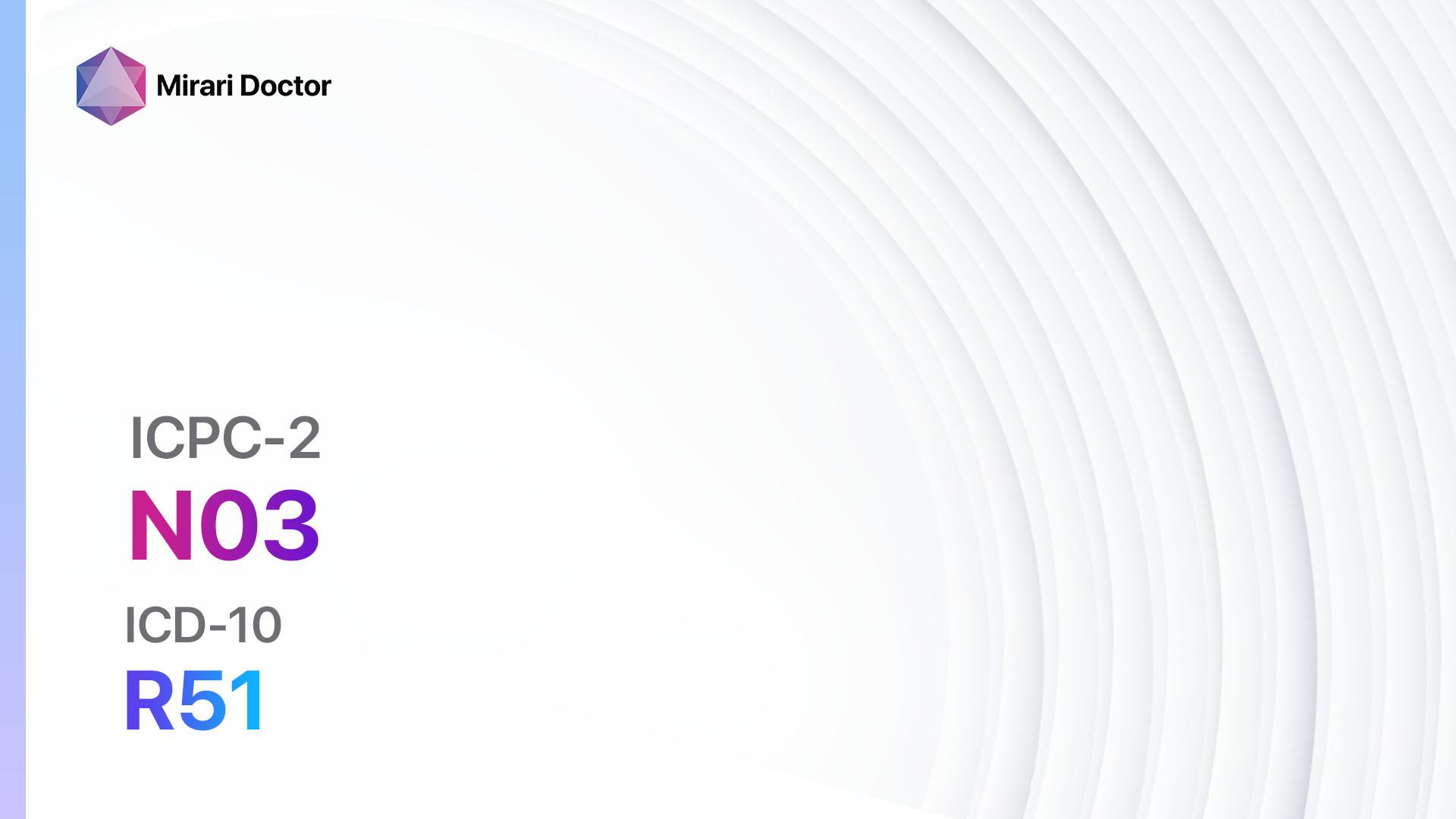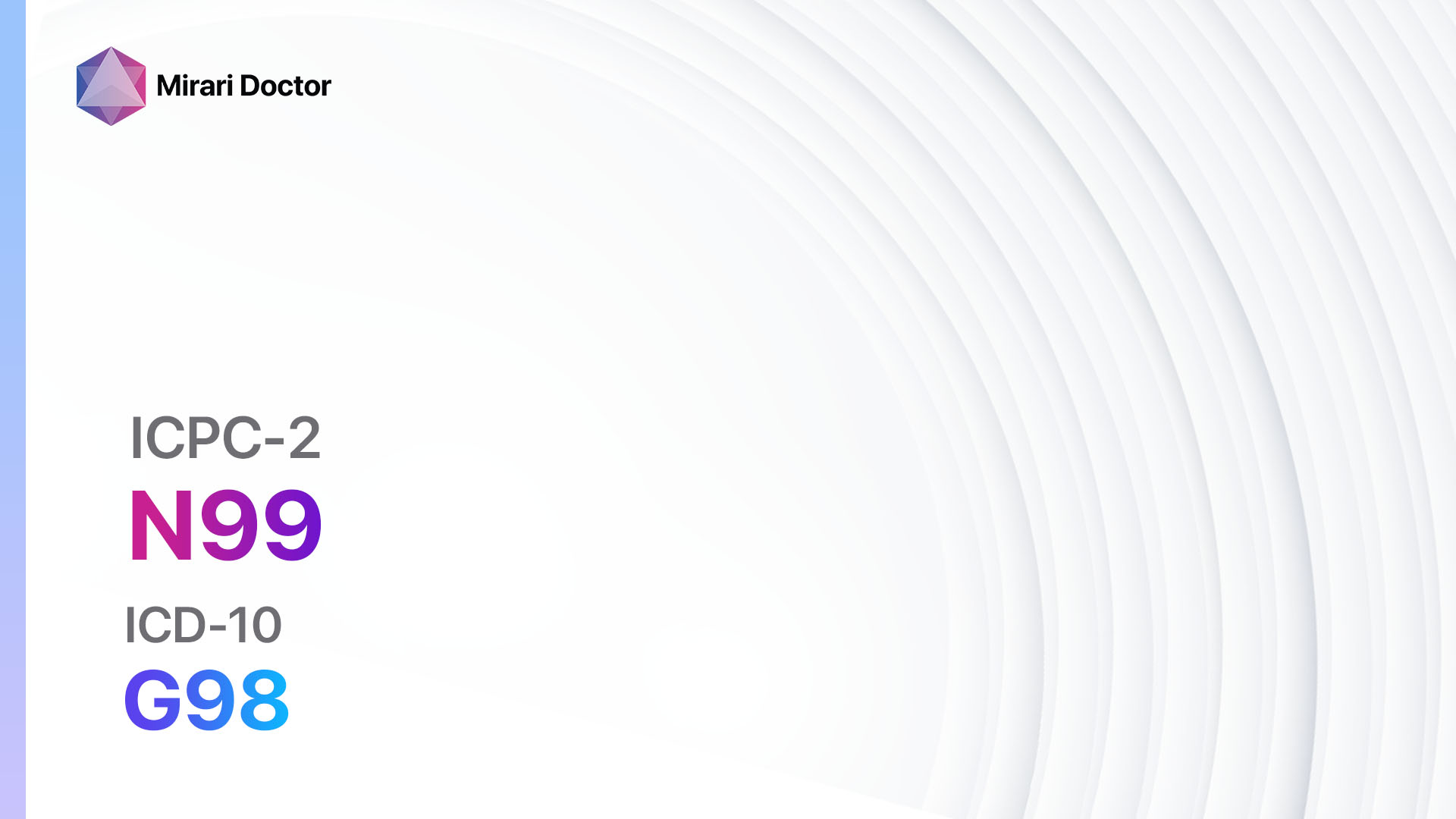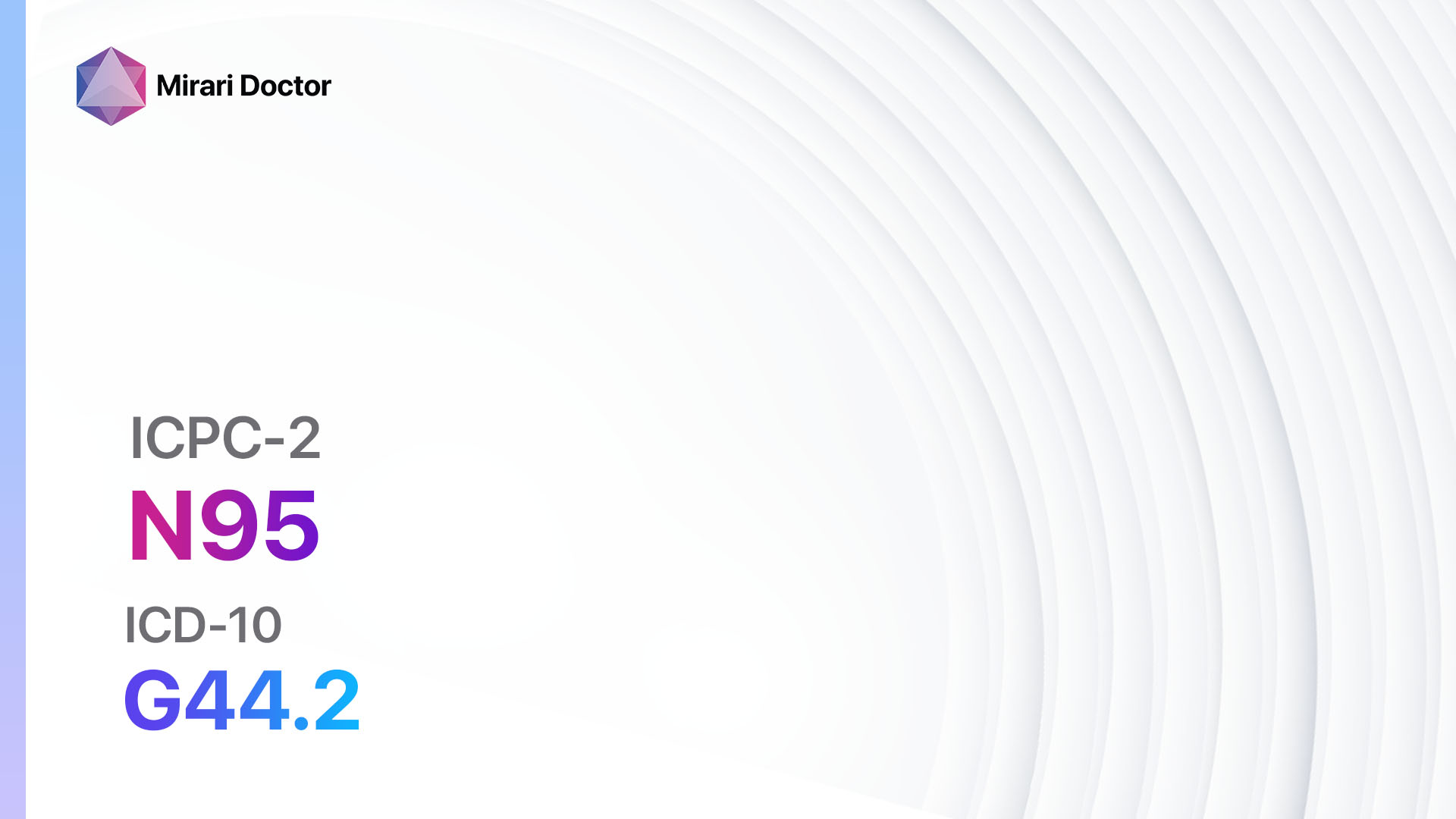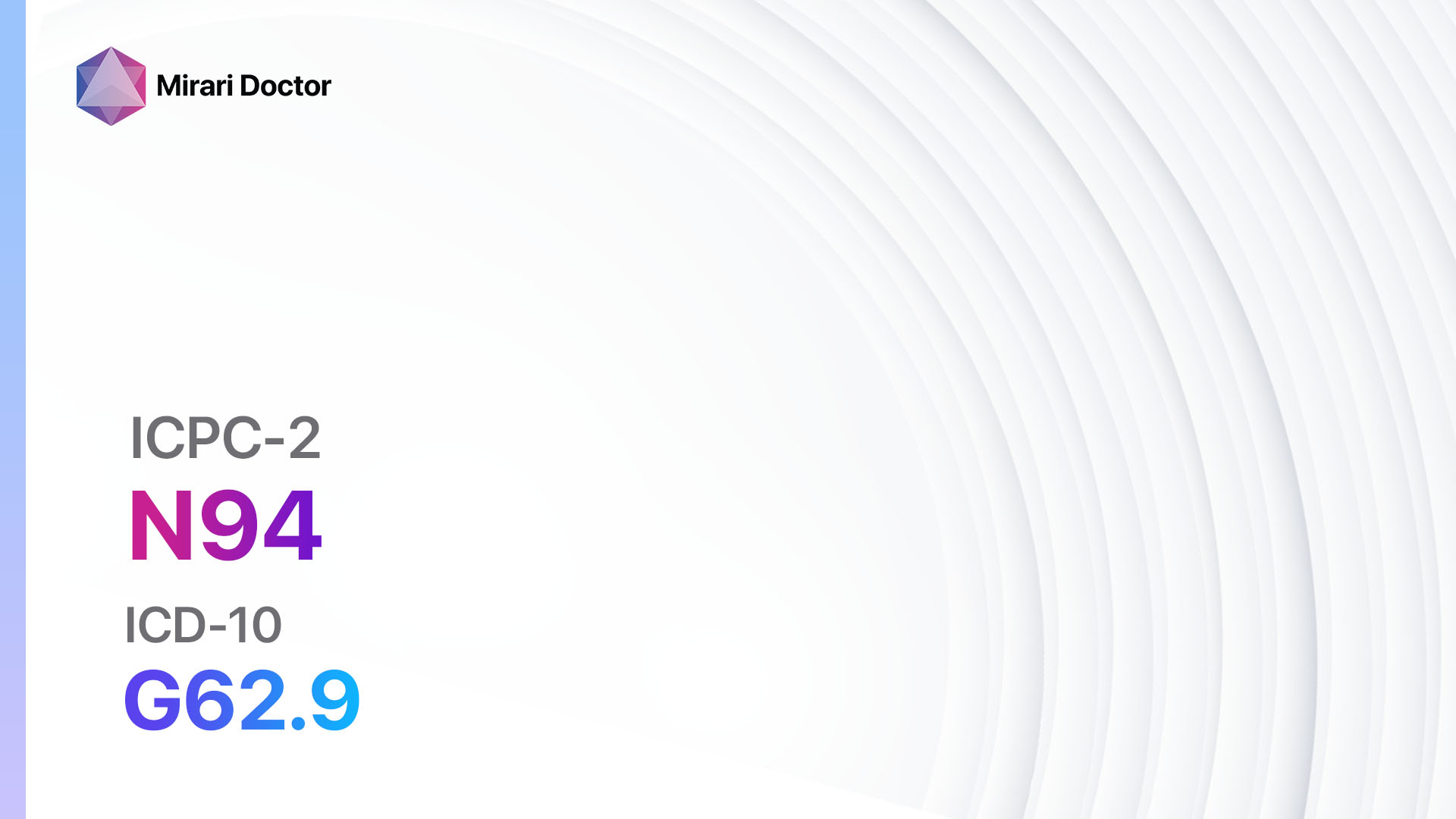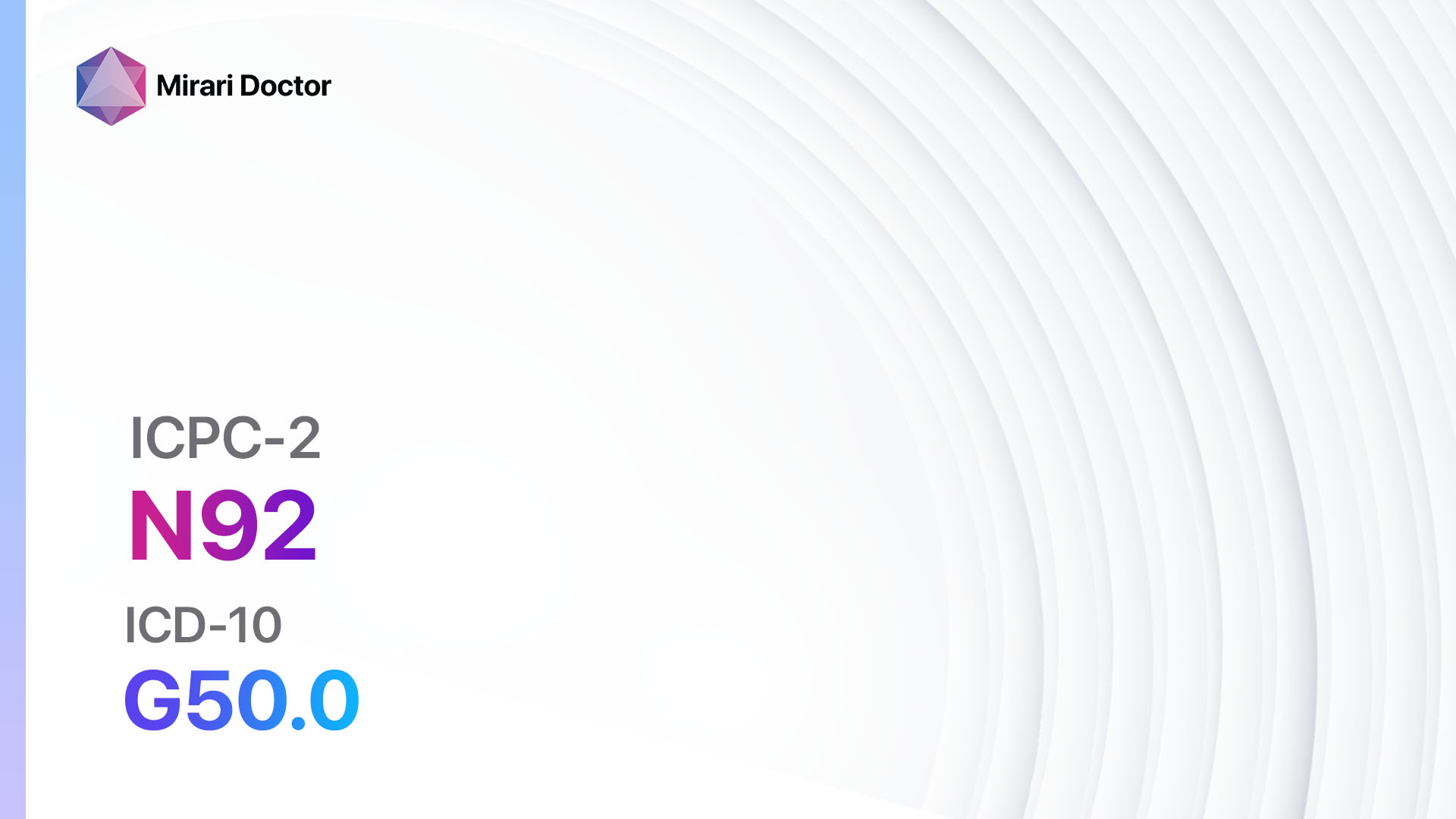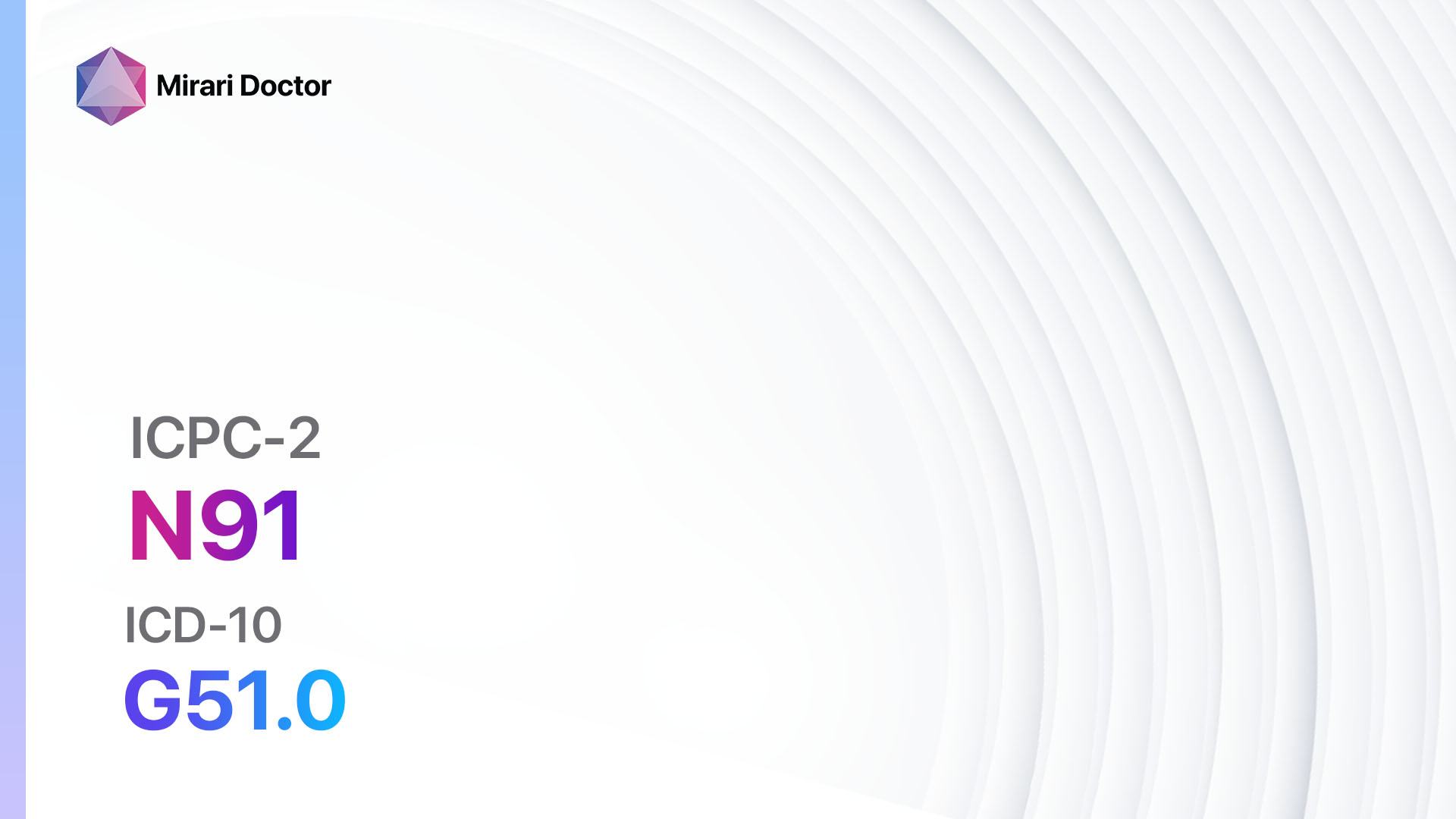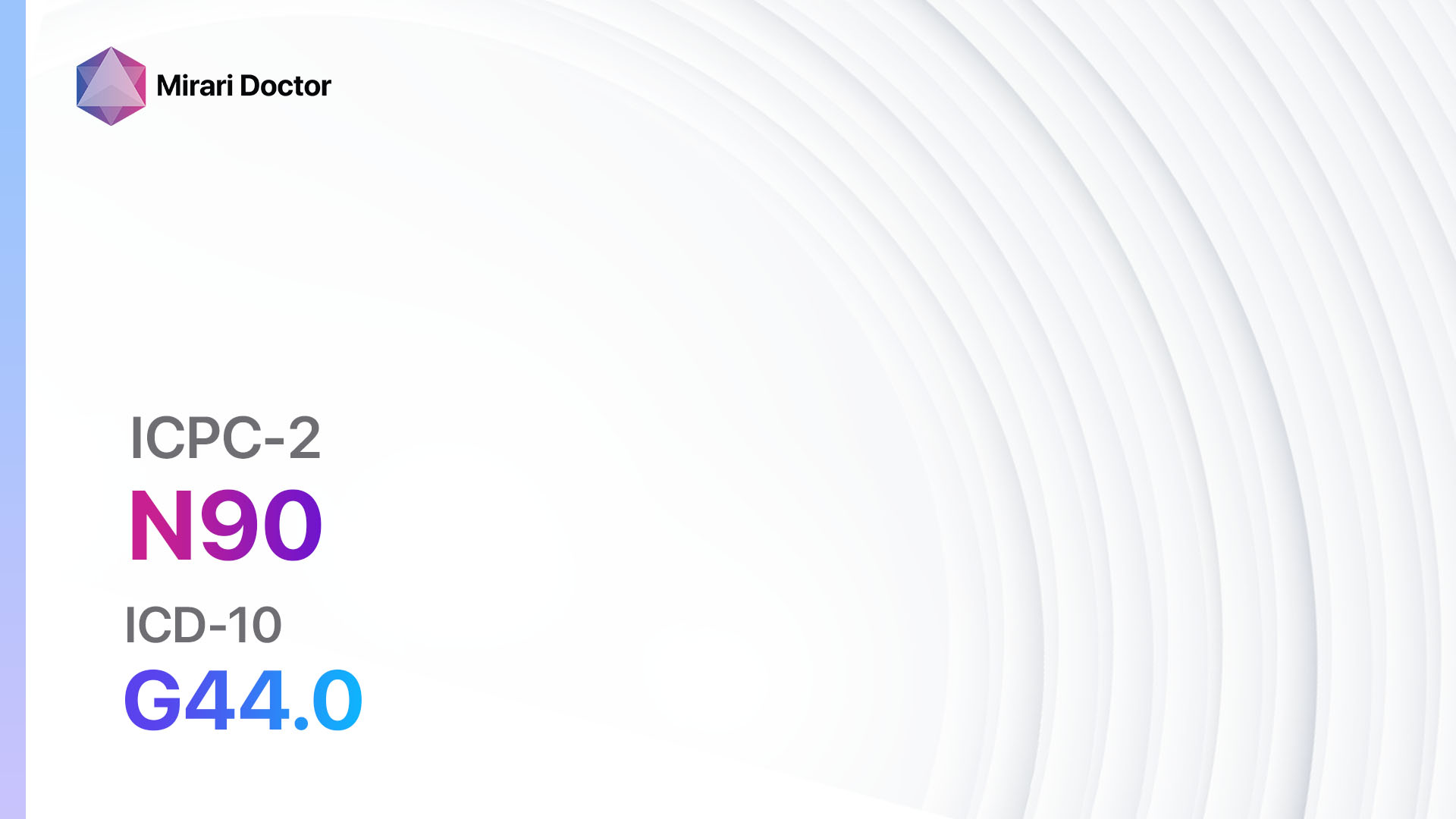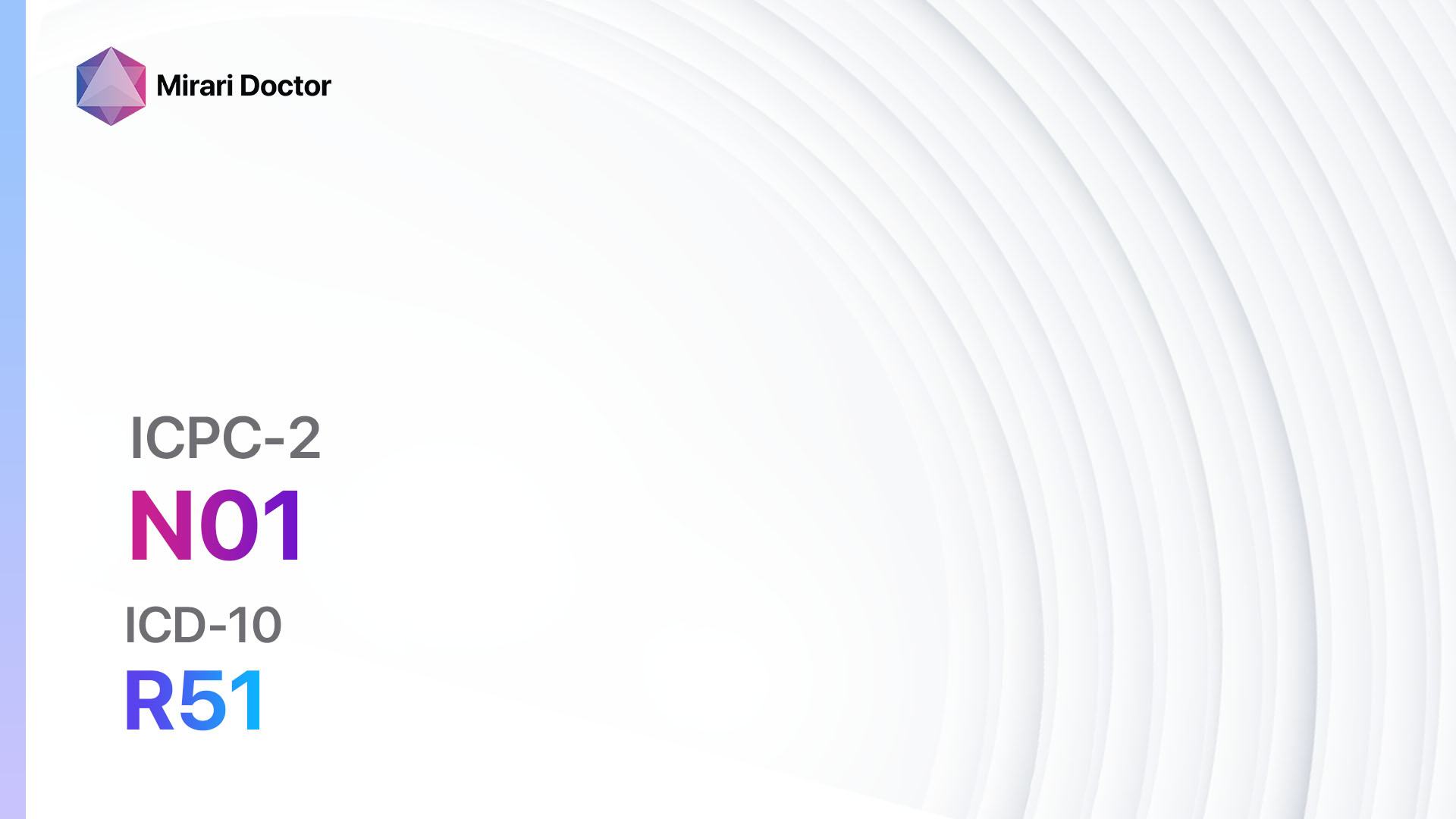
Introduction
Headache is a common condition that affects individuals of all ages. It can be a result of various factors, including stress, tension, sinus problems, migraines, or underlying medical conditions. Headaches can significantly impact a person’s quality of life and daily functioning[1]. The aim of this guide is to provide a comprehensive overview of the symptoms, causes, diagnostic steps, possible interventions, and lifestyle interventions for headache management.
Codes
- ICPC-2 Code: N01 Headache
- ICD-10 Code: R51 Headache
Symptoms
- Throbbing or pulsating pain in the head
- Sensitivity to light or sound
- Nausea or vomiting
- Tension or pressure in the head or neck
- Dizziness or lightheadedness
- Visual disturbances (e.g., aura)
- Fatigue or irritability[2]
Causes
- Tension headaches: Often caused by stress, anxiety, or muscle tension in the head and neck.
- Migraines: Neurological condition characterized by severe headaches, often accompanied by visual disturbances and sensitivity to light and sound.
- Sinus headaches: Caused by inflammation or infection in the sinuses.
- Cluster headaches: Rare type of headache that occurs in clusters or cycles, often causing severe pain on one side of the head.
- Medication overuse headaches: Result from excessive use of pain medications, leading to rebound headaches.[3]
Diagnostic Steps
Medical History
- Gather information about the frequency, duration, and intensity of headaches.
- Identify any triggers or patterns associated with headaches.
- Assess the impact of headaches on daily activities and quality of life.
- Inquire about any previous medical conditions or head injuries.[4]
Physical Examination
- Perform a thorough examination of the head, neck, and neurological system.
- Check for any signs of inflammation or infection in the sinuses.
- Assess muscle tension or tenderness in the head and neck.
- Evaluate eye movements and visual acuity.[5]
Laboratory Tests
- Complete blood count (CBC): To rule out underlying infections or abnormalities.
- Erythrocyte sedimentation rate (ESR): To assess for inflammation.
- Thyroid function tests: To evaluate thyroid function, as thyroid disorders can contribute to headaches.
- Allergy testing: To identify any potential allergens triggering sinus headaches.[6]
Diagnostic Imaging
- CT scan: To visualize the brain and rule out any structural abnormalities or bleeding.
- MRI: Provides detailed images of the brain and surrounding structures, useful for identifying tumors or other abnormalities.
- Sinus X-ray or CT scan: To assess the sinuses for inflammation or infection.[7]
Other Tests
- Lumbar puncture (spinal tap): May be necessary if there is suspicion of meningitis or other neurological conditions.
- Electroencephalogram (EEG): To evaluate brain activity and rule out seizures as a cause of headaches.[8]
Follow-up and Patient Education
- Schedule follow-up appointments to monitor the effectiveness of interventions and adjust treatment plans if necessary.
- Provide education on headache triggers, stress management techniques, and lifestyle modifications to prevent or manage headaches.[9][10]
Possible Interventions
Traditional Interventions
Medications:
Top 5 drugs for Headache:
- Acetaminophen (e.g., Tylenol):
- Cost: $5-$15 for a bottle of 100 tablets.
- Contraindications: Severe liver disease, alcoholism.
- Side effects: Rare, but can include liver damage with high doses.
- Severe side effects: Allergic reactions, skin rash.
- Drug interactions: None significant.
- Warning: Do not exceed recommended dosage.
- Nonsteroidal anti-inflammatory drugs (NSAIDs) (e.g., Ibuprofen, Naproxen):
- Cost: $5-$20 for a bottle of 100 tablets.
- Contraindications: Active peptic ulcer disease, history of gastrointestinal bleeding.
- Side effects: Upset stomach, heartburn.
- Severe side effects: Gastrointestinal bleeding, kidney problems.
- Drug interactions: Aspirin, blood thinners.
- Warning: Long-term use can increase the risk of heart attack or stroke.
- Triptans (e.g., Sumatriptan, Rizatriptan):
- Cost: $20-$100 for a pack of 9 tablets.
- Contraindications: History of heart disease, uncontrolled high blood pressure.
- Side effects: Tingling or warmth sensation, dizziness.
- Severe side effects: Chest pain, shortness of breath.
- Drug interactions: SSRIs, MAO inhibitors.
- Warning: Do not exceed recommended dosage.
- Ergotamine (e.g., Ergomar):
- Cost: $30-$60 for a pack of 30 tablets.
- Contraindications: History of heart disease, peripheral vascular disease.
- Side effects: Nausea, vomiting.
- Severe side effects: Chest pain, muscle pain.
- Drug interactions: CYP3A4 inhibitors, beta-blockers.
- Warning: Do not use more than 2 days per week.
- Botox (Botulinum toxin type A):
- Cost: $300-$600 per treatment session.
- Contraindications: Hypersensitivity to botulinum toxin, infection at the injection site.
- Side effects: Neck pain, muscle weakness.
- Severe side effects: Difficulty swallowing or breathing.
- Drug interactions: None significant.
- Warning: Only approved for chronic migraines.
Alternative Drugs:
- Butalbital compound (e.g., Fioricet): A combination of butalbital, acetaminophen, and caffeine, often used for tension headaches.
- Antidepressants (e.g., Amitriptyline, Venlafaxine): Can be effective for preventing migraines.
- Anticonvulsants (e.g., Topiramate, Valproate): Used as preventive medications for migraines.
- Calcitonin gene-related peptide (CGRP) inhibitors (e.g., Erenumab, Fremanezumab): New class of medications specifically developed for migraines.
- Muscle relaxants (e.g., Cyclobenzaprine): Used to relieve muscle tension associated with headaches.
Surgical Procedures:
- Occipital nerve stimulation: Involves implanting a device to provide electrical stimulation to the occipital nerves, which can help alleviate chronic migraines. Cost: $20,000-$30,000.
- Decompression surgery: For individuals with chronic migraines caused by nerve compression, surgery can be performed to relieve pressure on the affected nerves. Cost: $10,000-$20,000.
Alternative Interventions
- Acupuncture: May help reduce the frequency and intensity of headaches. Cost: $60-$120 per session.
- Chiropractic adjustments: Can help alleviate tension and improve spinal alignment. Cost: $30-$200 per session.
- Biofeedback: Teaches individuals to control bodily functions, such as muscle tension and heart rate, to reduce headaches. Cost: $50-$150 per session.
- Herbal supplements: Some herbs, such as feverfew and butterbur, have shown potential in reducing the frequency of migraines. Cost: Varies depending on the specific supplement.
- Mind-body techniques: Practices like meditation, yoga, and tai chi can help manage stress and reduce the occurrence of tension headaches. Cost: Varies depending on the class or instructor.
Lifestyle Interventions
- Stress management: Engaging in stress-reducing activities, such as exercise, relaxation techniques, and hobbies, can help prevent headaches. Cost: Varies depending on the activity.
- Regular sleep schedule: Maintaining a consistent sleep routine can help regulate sleep patterns and reduce the risk of headaches. Cost: None.
- Hydration: Drinking an adequate amount of water throughout the day can prevent dehydration-related headaches. Cost: None.
- Healthy diet: Consuming a balanced diet rich in fruits, vegetables, and whole grains can support overall health and reduce the risk of headaches. Cost: Varies depending on food choices.
- Regular exercise: Engaging in regular physical activity can help improve circulation, reduce stress, and prevent headaches. Cost: Varies depending on the activity.
It is important to note that the cost ranges provided are approximate and may vary depending on the location and availability of the interventions. It is recommended to consult with healthcare professionals for personalized treatment plans and cost estimates.
Mirari Cold Plasma Alternative Intervention
Understanding Mirari Cold Plasma
- Safe and Non-Invasive Treatment: Mirari Cold Plasma is a safe and non-invasive treatment option for various skin conditions. It does not require incisions, minimizing the risk of scarring, bleeding, or tissue damage.
- Efficient Extraction of Foreign Bodies: Mirari Cold Plasma facilitates the removal of foreign bodies from the skin by degrading and dissociating organic matter, allowing easier access and extraction.
- Pain Reduction and Comfort: Mirari Cold Plasma has a local analgesic effect, providing pain relief during the treatment, making it more comfortable for the patient.
- Reduced Risk of Infection: Mirari Cold Plasma has antimicrobial properties, effectively killing bacteria and reducing the risk of infection.
- Accelerated Healing and Minimal Scarring: Mirari Cold Plasma stimulates wound healing and tissue regeneration, reducing healing time and minimizing the formation of scars.
Mirari Cold Plasma Prescription
Video instructions for using Mirari Cold Plasma Device – N01 Headache (ICD-10:R51)
| Mild | Moderate | Severe |
| Mode setting: 8 (Insomnia) Location: 0 (Localized) Morning: 15 minutes, Evening: 15 minutes |
Mode setting: 8 (Insomnia) Location: 0 (Localized) Morning: 30 minutes, Lunch: 30 minutes, Evening: 30 minutes |
Mode setting: 8 (Insomnia) Location: 0 (Localized) Morning: 30 minutes, Lunch: 30 minutes, Evening: 30 minutes |
| Mode setting: 7 (Immunotherapy) Location: 7 (Neuro system & ENT) Morning: 15 minutes, Evening: 15 minutes |
Mode setting: 7 (Immunotherapy) Location: 7 (Neuro system & ENT) Morning: 30 minutes, Lunch: 30 minutes, Evening: 30 minutes |
Mode setting: 7 (Immunotherapy) Location: 7 (Neuro system & ENT) Morning: 30 minutes, Lunch: 30 minutes, Evening: 30 minutes |
| Mode setting: 7 (Immunotherapy) Location: 1 (Sacrum) Morning: 15 minutes, Evening: 15 minutes |
Mode setting: 7 (Immunotherapy) Location: 1 (Sacrum) Morning: 30 minutes, Lunch: 30 minutes, Evening: 30 minutes |
Mode setting: 7 (Immunotherapy) Location: 1 (Sacrum) Morning: 30 minutes, Lunch: 30 minutes, Evening: 30 minutes |
| Total Morning: 45 minutes approx. $7.50 USD, Evening: 45 minutes approx. $7.50 USD |
Total Morning: 90 minutes approx. $15 USD, Lunch: 90 minutes approx. $15 USD, Evening: 90 minutes approx. $15 USD, |
Total Morning: 90 minutes approx. $15 USD, Lunch: 90 minutes approx. $15 USD, Evening: 90 minutes approx. $15 USD, |
| Usual treatment for 7-60 days approx. $105 USD – $900 USD | Usual treatment for 6-8 weeks approx. $1,890 USD – $2,520 USD |
Usual treatment for 3-6 months approx. $4,050 USD – $8,100 USD
|
 |
|
Use the Mirari Cold Plasma device to treat Headache effectively.
WARNING: MIRARI COLD PLASMA IS DESIGNED FOR THE HUMAN BODY WITHOUT ANY ARTIFICIAL OR THIRD PARTY PRODUCTS. USE OF OTHER PRODUCTS IN COMBINATION WITH MIRARI COLD PLASMA MAY CAUSE UNPREDICTABLE EFFECTS, HARM OR INJURY. PLEASE CONSULT A MEDICAL PROFESSIONAL BEFORE COMBINING ANY OTHER PRODUCTS WITH USE OF MIRARI.
Step 1: Cleanse the Skin
- Start by cleaning the affected area of the skin with a gentle cleanser or mild soap and water. Gently pat the area dry with a clean towel.
Step 2: Prepare the Mirari Cold Plasma device
- Ensure that the Mirari Cold Plasma device is fully charged or has fresh batteries as per the manufacturer’s instructions. Make sure the device is clean and in good working condition.
- Switch on the Mirari device using the power button or by following the specific instructions provided with the device.
- Some Mirari devices may have adjustable settings for intensity or treatment duration. Follow the manufacturer’s instructions to select the appropriate settings based on your needs and the recommended guidelines.
Step 3: Apply the Device
- Place the Mirari device in direct contact with the affected area of the skin. Gently glide or hold the device over the skin surface, ensuring even coverage of the area experiencing.
- Slowly move the Mirari device in a circular motion or follow a specific pattern as indicated in the user manual. This helps ensure thorough treatment coverage.
Step 4: Monitor and Assess:
- Keep track of your progress and evaluate the effectiveness of the Mirari device in managing your Headache. If you have any concerns or notice any adverse reactions, consult with your health care professional.
Note
This guide is for informational purposes only and should not replace the advice of a medical professional. Always consult with your healthcare provider or a qualified medical professional for personal advice, diagnosis, or treatment. Do not solely rely on the information presented here for decisions about your health. Use of this information is at your own risk. The authors of this guide, nor any associated entities or platforms, are not responsible for any potential adverse effects or outcomes based on the content.
Mirari Cold Plasma System Disclaimer
- Purpose: The Mirari Cold Plasma System is a Class 2 medical device designed for use by trained healthcare professionals. It is registered for use in Thailand and Vietnam. It is not intended for use outside of these locations.
- Informational Use: The content and information provided with the device are for educational and informational purposes only. They are not a substitute for professional medical advice or care.
- Variable Outcomes: While the device is approved for specific uses, individual outcomes can differ. We do not assert or guarantee specific medical outcomes.
- Consultation: Prior to utilizing the device or making decisions based on its content, it is essential to consult with a Certified Mirari Tele-Therapist and your medical healthcare provider regarding specific protocols.
- Liability: By using this device, users are acknowledging and accepting all potential risks. Neither the manufacturer nor the distributor will be held accountable for any adverse reactions, injuries, or damages stemming from its use.
- Geographical Availability: This device has received approval for designated purposes by the Thai and Vietnam FDA. As of now, outside of Thailand and Vietnam, the Mirari Cold Plasma System is not available for purchase or use.
References
- Stovner, L. J., et al. (2007). The global burden of headache: a documentation of headache prevalence and disability worldwide. Cephalalgia, 27(3), 193-210.
- Headache Classification Committee of the International Headache Society (IHS). (2018). The International Classification of Headache Disorders, 3rd edition. Cephalalgia, 38(1), 1-211.
- Diener, H. C., et al. (2015). Chronic headache due to overuse of analgesics and anti-migraine agents. Deutsches Ärzteblatt International, 112(20), 337.
- Goadsby, P. J., et al. (2017). Pathophysiology of migraine: a disorder of sensory processing. Physiological Reviews, 97(2), 553-622.
- Silberstein, S. D., et al. (2016). Evidence-based guideline update: pharmacologic treatment for episodic migraine prevention in adults: report of the Quality Standards Subcommittee of the American Academy of Neurology and the American Headache Society. Neurology, 78(17), 1337-1345.
- Loder, E., et al. (2013). The 2012 AHS/AAN guidelines for prevention of episodic migraine: a summary and comparison with other recent clinical practice guidelines. Headache: The Journal of Head and Face Pain, 53(5), 829-841.
- May, A., & Schulte, L. H. (2016). Chronic migraine: risk factors, mechanisms and treatment. Nature Reviews Neurology, 12(8), 455.
- Lipton, R. B., et al. (2007). Migraine prevalence, disease burden, and the need for preventive therapy. Neurology, 68(5), 343-349.
- Buse, D. C., et al. (2019). Migraine progression: a systematic review. Headache: The Journal of Head and Face Pain, 59(3), 306-338.
- Ashina, M., et al. (2021). Migraine: integrated approaches to clinical management and
Related articles
Made in USA


